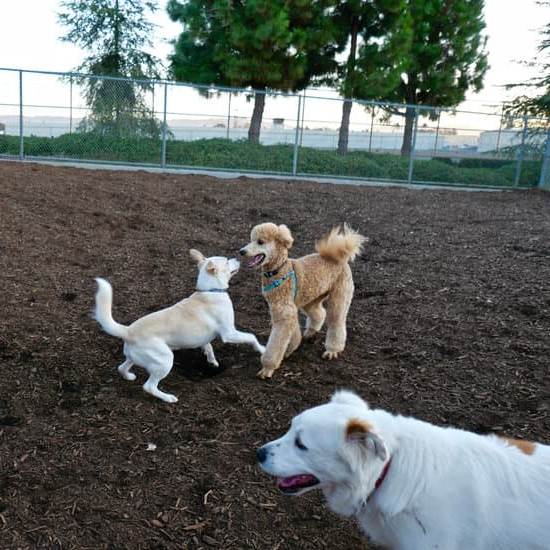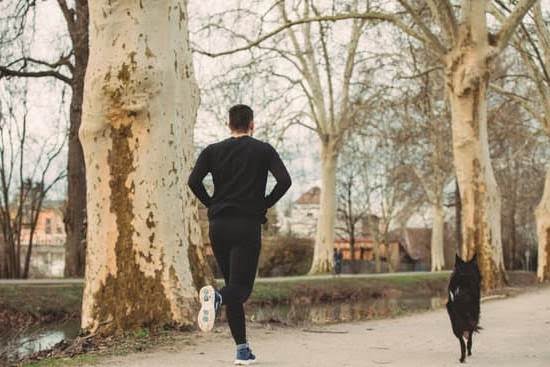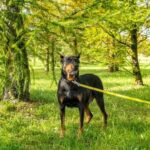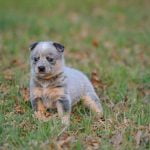Are you constantly asking yourself, “how to train my dog not to attack?” If so, it’s important to understand the root cause of aggressive behavior in dogs. Aggression can stem from various factors such as fear, territorial instincts, or a traumatic past. In this article, we will explore effective training methods to address and correct aggressive behavior in your beloved pet.
Recognizing the warning signs of aggression is crucial for any dog owner. Whether it’s growling, barking, or biting, it’s essential to be able to identify these behaviors in order to address them effectively. Establishing leadership and authority as the owner is also key in curbing aggressive tendencies in your dog. By establishing yourself as the pack leader through consistent training and positive reinforcement, you can help your pet develop a sense of trust and respect towards you.
Implementing positive reinforcement training techniques is one of the most effective ways to train your dog not to attack. This includes rewarding good behavior with treats or praise while redirecting negative behavior in a firm but gentle manner. Socializing your dog with other animals and people is also important in preventing aggressive behavior as it helps them learn appropriate interactions. Additionally, desensitization and counterconditioning methods can be used to modify your dog’s response when faced with triggering situations.
It’s important to note that severe aggression cases may require professional help from a certified dog trainer or behaviorist. Finally, maintaining consistency and patience throughout the training process is essential for long-term success. Understanding the legal and ethical responsibilities of owning an aggressive dog is crucial for ensuring not only the safety of others but also the well-being of your pet.
Recognizing the Warning Signs of Aggression in Dogs
It is important for dog owners to be able to recognize the warning signs of aggression in their pets in order to address any potential issues before they escalate. Common signs of aggression in dogs include growling, baring teeth, snapping, lunging, or biting. It is essential for owners to understand that these behaviors are not a normal part of a dog’s personality and should not be ignored.
One way to identify potential aggressive behavior is by observing how your dog interacts with other animals and people. If your pet shows excessive dominance or possessiveness over food, toys, or territory, it could be a sign of underlying aggression. Additionally, if your dog displays fearful or defensive behavior around certain situations or individuals, it is crucial to address these warning signs promptly.
Furthermore, paying attention to body language can also help in recognizing aggression in dogs. Raised hackles, stiff posture, direct eye contact, and raised tail with a stiff wag are all indicators of heightened arousal or aggression in canines. By learning to interpret these signals, owners can take appropriate measures to prevent aggressive behaviors from escalating.
Establishing Leadership and Authority as the Owner
Setting the Ground Rules
One of the most important steps in training your dog not to attack is establishing yourself as the pack leader. Dogs are pack animals, and they look to their owners for leadership and guidance. This means setting clear boundaries and rules for your dog to follow. Consistency is key when it comes to enforcing these rules, as any mixed signals can confuse your dog and lead to unwanted behaviors.
Building Trust and Respect
To establish yourself as the leader, you must also build a strong foundation of trust and respect with your dog. This involves being firm yet gentle in your approach, providing proper care and attention, and being consistent in your interactions with your pet. Building trust and respect will help create a harmonious relationship between you and your dog, making it easier for them to follow your guidance.
Training Methods
When working on establishing leadership and authority, it’s important to use positive reinforcement training techniques. This means rewarding good behavior with treats, praise, or toys, rather than punishing bad behavior. Positive reinforcement will help strengthen the bond between you and your dog while also promoting a more positive learning experience for them. Remember that training takes time and patience, so be consistent with your methods and give your dog plenty of opportunities to succeed.
By taking the time to establish yourself as a confident leader in a gentle yet firm manner, you can help guide your dog away from aggressive behaviors towards more desirable responses.
Implementing Positive Reinforcement Training Techniques
What Is Positive Reinforcement Training?
Positive reinforcement training is a method that focuses on rewarding good behavior rather than punishing bad behavior. This type of training involves using rewards, such as treats, praise, or toys, to encourage the dog to exhibit desirable behavior.
How to Use Positive Reinforcement Training
When implementing positive reinforcement training techniques to prevent your dog from attacking, it’s important to reward your dog for displaying non-aggressive behavior. For example, if your dog remains calm and friendly when meeting new people or animals, immediately reward them with a treat and praise. This helps your dog associate positive experiences with non-aggressive behavior.
It’s crucial to be consistent with the use of positive reinforcement in training your dog. Be sure to reward your dog every time they display the desired behavior, gradually reducing the frequency of rewards as the behavior becomes more ingrained.
The Benefits of Positive Reinforcement Training
Using positive reinforcement training techniques not only helps prevent aggressive behavior in dogs but also strengthens the bond between you and your pet. By focusing on rewarding good behavior, you are creating a positive and enjoyable learning experience for your dog. Additionally, this method tends to yield longer-lasting results compared to punishment-based training methods.
Incorporating positive reinforcement into your dog’s training routine can also create a happier and more confident pet. When dogs feel appreciated and rewarded for their good behavior, they are more likely to repeat that behavior in the future.
Socializing Your Dog With Other Animals and People
Training your dog not to attack starts with socializing them with other animals and people. Proper socialization can help prevent aggressive behavior and make your furry friend more comfortable in different situations.
Here are some tips for socializing your dog:
- Start early: Introduce your dog to different animals, people, and environments as early as possible. This will help them become more comfortable around new experiences.
- Use positive reinforcement: Reward your dog for good behavior when interacting with other animals and people. This will encourage them to continue positive interactions.
- Gradual exposure: Slowly expose your dog to new situations and environments. Allow them to observe from a safe distance before getting closer.
- Supervise interactions: Always supervise your dog when they are interacting with other animals or people, especially if they have shown signs of aggression in the past.
Proper socialization is essential for preventing aggressive behavior in dogs. By following these tips and being patient, you can help your canine companion become a well-adjusted and friendly member of the community.
Using Desensitization and Counterconditioning Methods
Desensitization and counterconditioning are two powerful methods for changing a dog’s response to a specific trigger, especially in cases of aggressive behavior. Desensitization involves gradually exposing the dog to the trigger at a low intensity, while counterconditioning involves replacing the negative association with a positive one. These methods are often used together to help dogs overcome their aggressive tendencies.
When using desensitization and counterconditioning, it is important to start at a level where the dog does not show signs of aggression. For example, if the trigger is another dog, start by having the dog observe other dogs from a distance where they feel comfortable and relaxed. As they become more at ease with this distance, gradually decrease it until they can be near other dogs without reacting aggressively.
Counterconditioning involves pairing the trigger with something pleasant for the dog. This could be treats, praise, or their favorite toy. For example, every time the trigger appears (such as another dog), give your dog treats or play with them to create a positive association with that trigger.
It is crucial to approach desensitization and counterconditioning slowly and patiently. Rushing through these methods can worsen your dog’s aggressive behavior rather than improve it. Consistency is also key – make sure to practice these techniques regularly to see progress over time.
| Desensitization and Counterconditioning | Key Points |
|---|---|
| Desensitization | Gradually exposing the dog to triggers |
| Counterconditioning | Replacing negative associations with positive ones |
| Patience and consistency | Important for success in these methods |
Seeking Professional Help for Severe Aggression Cases
Dealing with a severely aggressive dog can be challenging and potentially dangerous. In some cases, seeking professional help is necessary to ensure the safety of both the dog and those around them. Here are some options for seeking professional assistance:
- Consult with a certified dog trainer or behaviorist who specializes in aggression.
- Seek guidance from a veterinarian to rule out any medical conditions that may be causing or contributing to the aggression.
- Consider working with an animal behaviorist who can provide expert insight into your dog’s aggressive behavior and develop a tailored training plan.
It’s important to remember that addressing severe aggression in dogs often requires specialized knowledge and experience. Professional help can provide you with the expertise and support needed to safely address your dog’s aggressive behavior.
In addition, seeking professional help can also provide you with legal protection and documentation in case of any incidents involving your aggressive dog. A professional can help ensure that you are meeting all legal and ethical responsibilities as the owner of an aggressive dog, including proper containment and signage, as well as compliance with local regulations regarding aggressive animals.
Remember, the welfare of your dog, as well as the safety of others, should always be top priority when dealing with severe aggression. Seeking professional help is an important step in effectively managing and addressing this challenging issue.
Maintaining Consistency and Patience Throughout the Training Process
When it comes to training a dog not to attack, consistency and patience are key factors for success. Dogs thrive on routine and repetition, so it is important to be consistent in setting boundaries and rules for your pet. This means enforcing the same commands and rewards every time, to avoid confusing the animal. Inconsistency can lead to mixed signals, which may result in further aggression.
Additionally, it is crucial to have patience throughout the training process. Rome wasn’t built in a day, and the same goes for retraining an aggressive dog. It takes time for your pet to unlearn its behavior and become receptive to new commands. Losing your temper or becoming frustrated will only hinder progress. Instead, stay calm and composed, rewarding small victories and showing understanding during setbacks.
Furthermore, maintaining consistency also requires the cooperation of other people who interact with your pet. Be sure that everyone who interacts with your dog is aware of the commands and training methods being implemented. Consistency from all parties will help reinforce positive behavior in your pet more effectively.
| Key Factor | Impact |
|---|---|
| Consistency | Prevents confusion and reinforces learning |
| Patience | Fosters trust between owner and pet; essential for progress |
| Cooperation | All parties need to be consistent during the training process |
Understanding the Legal and Ethical Responsibilities of Owning an Aggressive Dog
In conclusion, it is important for dog owners to understand the legal and ethical responsibilities that come with owning an aggressive dog. While training and socializing your dog are essential steps in managing aggression, it is crucial to acknowledge the potential risks and consequences of owning a dog with aggressive tendencies.
First and foremost, owners must be aware of the local laws and regulations regarding aggressive dogs. This may include mandatory leash laws, muzzling requirements, and potentially even liability insurance. It is the responsibility of the owner to ensure that they are in compliance with these laws to protect both their dog and those around them.
Additionally, there are ethical considerations when it comes to owning an aggressive dog. It is important for owners to take all necessary precautions to prevent their dog from causing harm to other animals or people. This may involve taking extra measures during walks or implementing safety protocols at home. Owners should also consider the well-being of their own dog and seek professional help if needed, prioritizing the safety and happiness of everyone involved.
Overall, by understanding and fulfilling these legal and ethical responsibilities, owners can better manage their aggressive dogs while also promoting a safer environment for others. It’s important to approach this situation with care, consideration, and a commitment to doing what is best for both the dog and the community.
Frequently Asked Questions
How Do You Train a Dog to Stop Attacking You?
Training a dog to stop attacking you requires consistent obedience training and behavior modification. It’s important to identify the root cause of the aggression, whether it’s fear, territorial behavior, or possessiveness. Positive reinforcement techniques, like rewarding good behavior with treats and praise, can be effective in teaching the dog to replace aggressive actions with more appropriate behaviors.
Can Aggression Be Trained Out of a Dog?
Aggression in dogs can be trained out through patient and consistent training methods. Utilizing positive reinforcement techniques and desensitization exercises can help the dog learn to control their aggressive impulses and respond calmly to triggers that previously caused aggression. Seeking professional help from a qualified dog trainer or behaviorist may also be necessary for severe cases of aggression.
How Do I Stop My Dog From Being Aggressive to Visitors?
Stopping a dog from being aggressive towards visitors involves implementing management strategies and carefully introducing the dog to new people in controlled settings. Training the dog to follow basic obedience commands like “sit” and “stay” can also help them remain calm around visitors.
Gradual exposure to visitors combined with positive associations, like treats or toys, can help reduce their aggressive responses over time.

Welcome to the blog! I am a professional dog trainer and have been working with dogs for many years. In this blog, I will be discussing various topics related to dog training, including tips, tricks, and advice. I hope you find this information helpful and informative. Thanks for reading!





